OUTCROP
Newsletter of the Rocky Mountain Association of Geologists

Platinum Sponsor







SUMMIT SPONSORS

















730 17th Street, B1, Denver, CO 80202 • 720-672-9898
The Rocky Mountain Association of Geologists (RMAG) is a nonprofit organization whose purposes are to promote interest in geology and allied sciences and their practical application, to foster scientific research and to encourage fellowship and cooperation among its members. The Outcrop is a monthly publication of the RMAG.
PRESIDENT Ben Burke bburke158@gmail.com
PRESIDENT-ELECT Mike Tischer mtischer@gmail.com
1st VICE PRESIDENT Ronald L. Parker parkero@gmail.com
1st VICE PRESIDENT-ELECT Lisa Wolff lwolff@bayless-cos.com
2nd VICE PRESIDENT Matt Bauer matthew.w.bauer.pg@gmail.com
2nd VICE PRESIDENT-ELECT Jason Eleson jasoneleson3@gmail.com
SECRETARY Sandra Labrum slabrum@slb.com
TREASURER
Anna Phelps aphelps@sm-energy.com
TREASURER ELECT
Holly Lindsey holly@energyfunders.com
COUNSELOR
Steve Crouch scrouch@whiteeagleexploration.com
Rates and sizes can be found on page 38. Advertising rates apply to either black and white or color ads. Submit color ads in RGB color to be compatible with web format. Borders are recommended for advertisements that comprise less than one half page. Digital files must be PC compatible submitted in png, jpg, tif, pdf or eps formats at a minimum of 300 dpi. If you have any questions, please call the RMAG office at 720-672-9898.
Ad copy, signed contract and payment must be received before advertising insertion. Contact the RMAG office for details.
DEADLINES: Ad submissions are the 1st of every month for the following month’s publication.
The Outcrop is a monthly publication of the Rocky Mountain Association of Geologists
DESIGN/LAYOUT: Nate Silva | nate@nate-silva.com
EXECUTIVE DIRECTOR Bridget Crowther bcrowther@rmag.org
OPERATIONS MANAGER Kathy Mitchell-Garton kmitchellgarton@rmag.org
LEAD EDITOR
Nate LaFontaine nlafontaine@sm-energy.com
CONTRIBUTING EDITORS
Elijah Adeniyi elijahadeniyi@montana.edu
Marlee Cloos marlee.cloos@bpx.com
Danielle Robinson danielle.robinson@dvn.com
WEDNESDAY NOON LUNCHEON RESERVATIONS
RMAG Office: 720-672-9898 Fax: 323-352-0046
staff@rmag.org or www.rmag.org
April 2 1
June 4 - 8
View the stratigraphy and sedimentology of the Niobrara/Fort Hays Formation at the CEMEX Quarry in Lyons. The quarry is undergoing reclamation, but many quarry faces are still accessible.
5 days/4 nights on the Lower San Juan with Fort Lewis on the Water Float through goosenecks, visit dramatic geological and archaeological sites Registration open!
June 2 42 5
July 1 5
On this unique field trip you'll see more impact craters in one day than anywhere else on Earth. Led by Kent Sundell, geology instructor at Casper College, who has studied and written extensively on this crater field, the Douglas Impact Site
A 2+ mile walking tour of some of downtown Denver’s iconic stone buildings, many of which are constructed with rock from Colorado quarries. See Yule Marble, Pike’s Peak and S. Beaver Creek Granites, and more! Refreshment stop is scheduled
Sept 9
Sept 3 0
Tour of the historic Beulah Quarry, source of Colorado Capitol's most unique building stone, led by Quarry owner Ken Balleweg. Also included is a visit to the Steelworks Center of the West in Pueblo.
Grab your bike and join Dr Donna Anderson on a tour of the geology of the Golden area Trip is 9 miles on a bike path
Registration for trips will generally open one month before the trip date. Check www.rmag.org for updates and details.

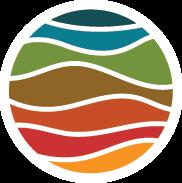
Dates subject to change. View website for additional info.

Newsletter of the Rocky Mountain Association of Geologists

RMAG Summit Sponsors
Lead Story: Geology at Western

RMAG March 2023 Board of Directors Meeting
President’s Letter
Hybrid Lunch Talk: Stephen Slaughter
Hybrid Lunch Talk: Ken Balleweg
Member Corner: Astrid Makowitz, PhD
In The Pipeline
Welcome New RMAG Members!
4 On-the-Rocks Field Trips
6 2023 RMAG Summit Sponsorship Packet
11 On-the-Rocks: CEMEX Niobrara Quarry Field Trip
13 North American Helium Conference Sponsors
15 On-the-Rocks: San Juan River Trip
25 RMAG Monthly Women’s Group Coffee
36 WANTED: Colorado Rocks!
Avery Peak (12,644 ft) in the Elk Range thrust zone. The prominent west face is a bedding plane in the PennsylvanianPermian Maroon Formation. West-dipping gray beds to left are the underlying Pennsylvanian Gothic Formation.
Credit: Robert Fillmore



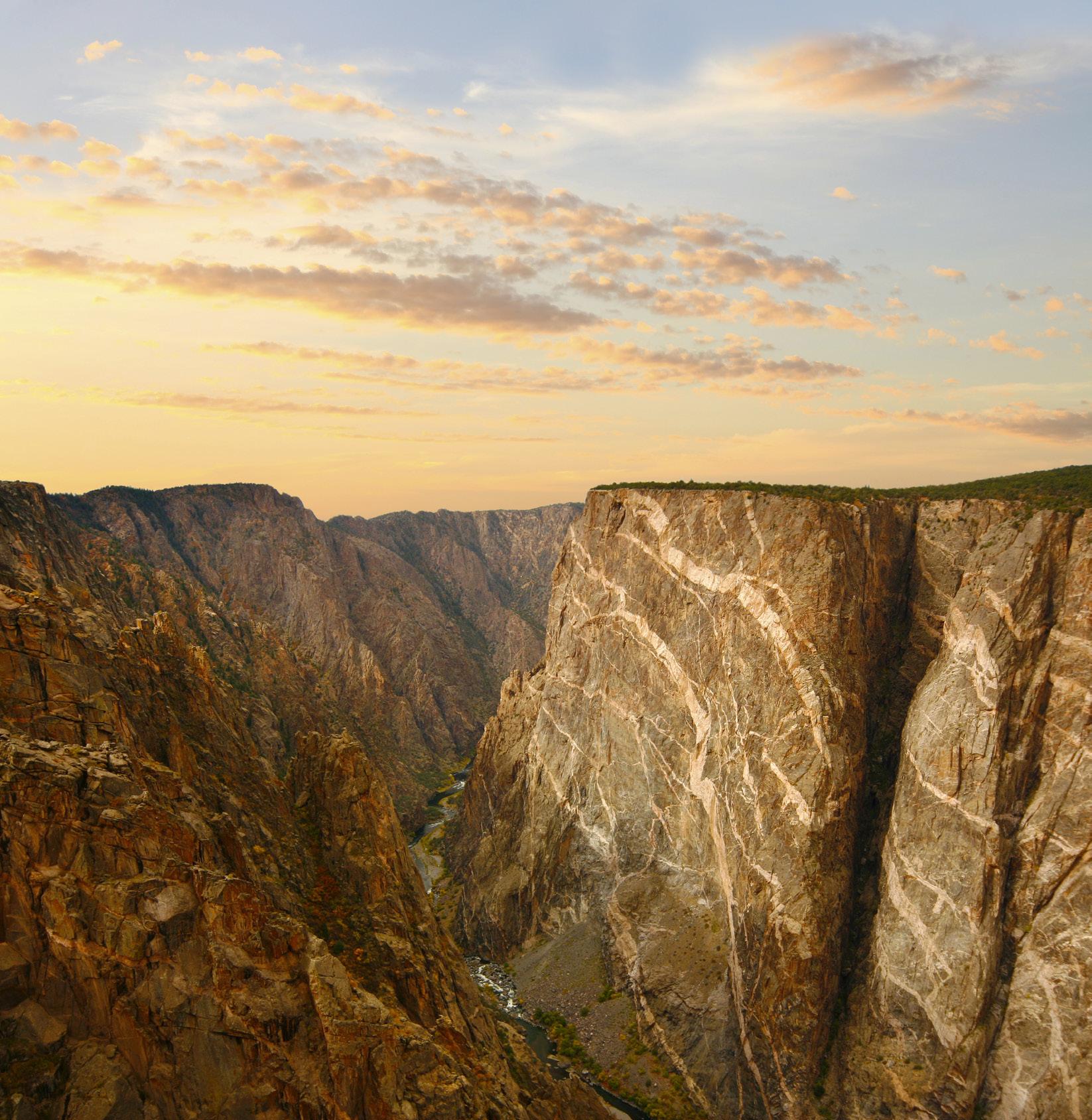
October 20, 2022
Geoscience Community:
We greatly appreciate every Summit Sponsor and Event Sponsor that has contributed to RMAG over the last year. We could not exist without your support.

In RMAG’s 100th year we have emerged from the global pandemic to return to many of RMAG’s beloved programs, and we created new programing to meet the needs of our members and the greater geoscience community. Monthly luncheons returned to in-person, with the addition live streaming. The 2022 Golf Tournament sold out bringing over 100 golfers out for a great afternoon together. The Powder River Basin Symposium offered two days of talks and core viewing to a packed room with attendees from across the country. Members young and old celebrated RMAG’s past and future at the 100th Anniversary Party. But that’s not all, the Diversity and Inclusion Committee in conjunction with Education Outreach attended numerous community outreach events from Girl Scout Days at Dinosaur Ridge to the Juneteenth Festival, sharing our members love of the geosciences with the next generation. Short courses were held both in person and online creating educational opportunities for members in Denver and across the country.
2023 brings new opportunities for RMAG. Your sponsorship dollars will help RMAG bring to fruition the 2023 North American Helium Symposium, an exciting Field Trip season, and a dynamic list of luncheon speakers on topics ranging from the state of the industry to the Williston Basin to geothermal energy storage. These dollars will allow RMAG Members to impact the next generation at outreach events throughout the community and provide opportunities for the geoscience community to connect and build their network. We’re looking forward to seeing everyone on a more regular basis.
Your sponsorship dollars support our excellent publications including the monthly Outcrop newsletter and the quarterly Mountain Geologist journal We recognize your financial commitment with in-person signage, website and publication advertising, as well and social media posts before each online event. With a LinkedIn group of almost 3000 members, we make our sponsors visible to the geoscience community for both virtual and in person events.
Thank you to those who are already a Summit Sponsor, we look forward to your continued support in 2023. If you are not already a sponsor, please look at the many complementary benefits included with the sponsorship levels. If our annual sponsorships don't make sense for your company, or you wish to sponsor something specific, ask about our single event sponsorship opportunities. Please feel free to contact our staff with questions by email: bcrowther@rmag.org or by phone at 720-672-9898 ext. 102.
We and the staff of RMAG thank you all for your continued support and look forward to seeing you in person this year.
 Ben Burke
Bridget Crowther 2023 RMAG President RMAG Executive Director
Ben Burke
Bridget Crowther 2023 RMAG President RMAG Executive Director
months of Outcrop advertising: To receive 12 full months, company logos and ad art must be received no later than the 20th of the month in which you register.
Points are
u
u l
and can be used for any social event. For example, 1 point means 1 golfer, or 1 registration for Rockbusters. *2 points can be used for a golf hole if that makes more sense for your company.
all event tickets please contact the RMAG office at staff@rmag.org to use your spots.

Payment Options
All sponsor benefits event tickets follow RMAG event registration deadlines. All benefits end 12 months after registration.
Platinum Sponsor
Gold Sponsor
Silver Sponsor
Summit Sponsorship benefit term is for 12 months! Specify type of payment on signed form, and send logo and advertisements to staff@rmag.org
Company:
Company Representative:
Address:
City: State: Zip Code:
Phone: Email:
Payment Method: Credit Card ACH Check
Credit Card Information:
Name as it appears on Credit Card:
Credit Card #:
Expiration Date:
Select Card: AMEX Mastercard VISA Discover Security Code:
Signature:
ACH: contact the RMAG office at staff@rmag.org for directions.
Mail Checks payable to RMAG:
Rocky Mountain Association of Geologists (RMAG)


730 17th Street, B1
Denver, CO 80202
RMAG events are subject to change. Cancellation or rescheduling of events does not give the sponsor the right to refund. Summit Sponsors will receive benefits at any new events added into the RMAG schedule.
Thank you for your generous support!
P: (720)672-9898
staff@rmag.org
www.rmag.org
730 17th Street, B1
Denver, CO 80202
Hi everyone! Happy Spring!
The March Board of Directors meeting took place March 15th, 2023, at 4pm online. All board members expect one were present. The Finance committee started off the meeting with an overview of the financial standing in February. February continued to be a solid month, showing a strong balance sheet due to Summit Sponsorships and member renewals.
The Continuing Education Committee is continuing to host hybrid lunches with great success. Stephen Slaughter will be presenting in April, Landslides and the Hazards Posed to Society by a Common Geologic Process. Also shout out to Bridget and the CEC for such a successful sold-out Helium conference. Thanks, Bridget, for doing such a great job! The Membership committee is continuing to revise the mentorship program to make it a more meaningful experience for the participants. We are also continuing the RMAG Women’s Group into the new year. The
April coffee will be on April 4th at Vibe Coffee sponsored by ROGII. The Publications Committee is still hard at work making sure there is high quality content for both the Outcrop and the Mountain Geologist. The Educational Outreach committee has a full schedule of events for this year. Applications for the Earth Science Teacher of the Year opens April 3rd so be sure to nominate a deserving earth science teacher. On the Rocks, has started to finalize the trips for this year so keep an eye on your email for the signups. The registration for the San Juan River trip is open now! Finally, Diversity and Inclusion committee has been hard at work bringing you member corners in each Outcrop as well as cohosting the women’s group coffee. The committee is also going to continue assisting with the youth programs for the Center on Colfax.
I hope you all have a fantastic April and enjoy this beautiful spring weather. Until next time!
Expanded geologic focus:

• Entire greater Rocky Mountain area of North America
• West Texas and New Mexico to northern British Columbia
• Great Plains and Mid-Continent region
Why contribute?
• Reach a broad industry and academic audience
• Quarterly peer-reviewed journal
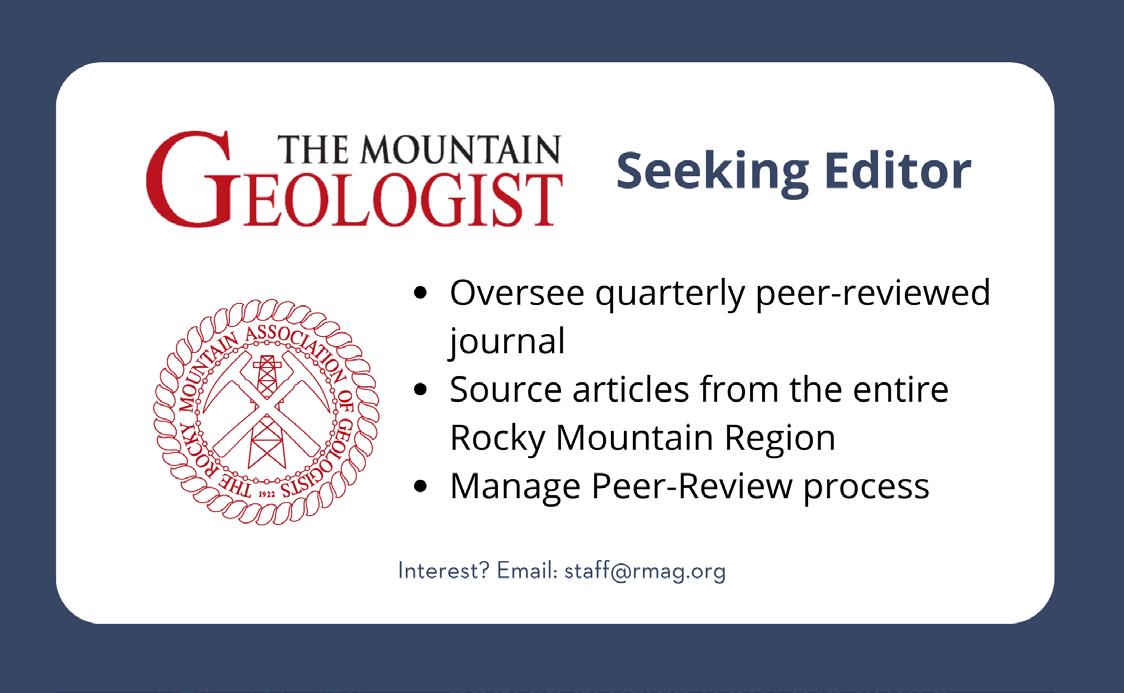
• Permanent archiving includes AAPG Datapages
• Quick turn-around time
• Every subdiscipline in the geosciences
Email: mgeditor@rmag.org
https://www.rmag.org/publications/the-mountain-geologist/


F

C E M E X N i o b r a r a Q u a r r y F i e l d T r i p

J o i n R M A G t o v i s i t o n e o f t h e b e s t N i o b r a r a e x p o s u r e s i n th e F r o n t R a n g e a t t h e C E M E X Q u a r r y i n L y o n s , C O . T r ip l e a d e r s S t e v e S o n n e n b e r g a n d B r o w n H a w k i n s w i l l g u i d e u s i n a n e x a m i n a t i o n o f t h e s t r a t i g r a p h y a n d s e d i m e n t o l o g y o f t h e N i o b r a r a a n d t h e s t r u c t u r a l g e o l o g y o f t h e N o r t h e r n F r o n t R a n g e . P a r t i c i p a n t s w i l l h a v e a n o p p o r t u n i t y t o h u n t f o r C r e t a c e o u s - a g e d f o s s i l s i n c l u d i n g i n o c e r a m i d s , a m m o n i t e s a n d a z u r e - c o l o r e d f i s h s c a l e s a l o n g w i t h i n t r i g u i n g f o r m s o f p y r i t e . W e w i l l e x a m i n e o u t c r o p s o f t h e C o d e l l S a n d s t o n e a n d F t . H a y e s L i m e s t o n e , d i s c u s s t h e i r d e p o s i t i o n a l h i s t o r y a n d t h e i r i m p o r t a n c e a s o i l a n d g a s r e s e r v o i r s i n t h e D J B a s i n .

I am so glad to report that the North American Helium Symposium on March 22nd and 23rd was a smashing success. The advance in-person registration sold out and virtual attendance registration sold briskly. The response of membership and the professional community to this event validates the strategic direction of the Association, which is to pursue technical engagement and community-building with geoscientists in all subsurface resources and applied disciplines. This strategic approach honors, and indeed continues to pursue, technical communications in oil and gas. It helps members see and travel the pathways and workflows of oil and gas skillsets in helium, hydrogen, carbon capture, geothermal, and critical minerals exploration, development, and production. A big thank you to the organizational committee who put together a great technical lineup and to the

Association’s Executive Director Bridget Crowther and RMAG staff who spent countless hours on logistics and planning to make the event a success.
And speaking of RMAG staff, I want to honor Kathy Mitchell-Garton, who has been with RMAG since 2016 and is moving on soon to pursue other endeavors. Kathy has been the friendly and knowledgeable face greeting you downtown at the check-in table for the monthly lunches, answering your emails and phone inquiries, and performing the countless administrative and operational tasks that keep the Association performing for you, our members. Kathy was essential in the continuity of RMAG operations during the last Executive Director transition late in the last decade when some of the volunteer Board members had to assume more active roles in the
» CONTINUED ON PAGE 14

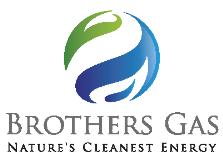

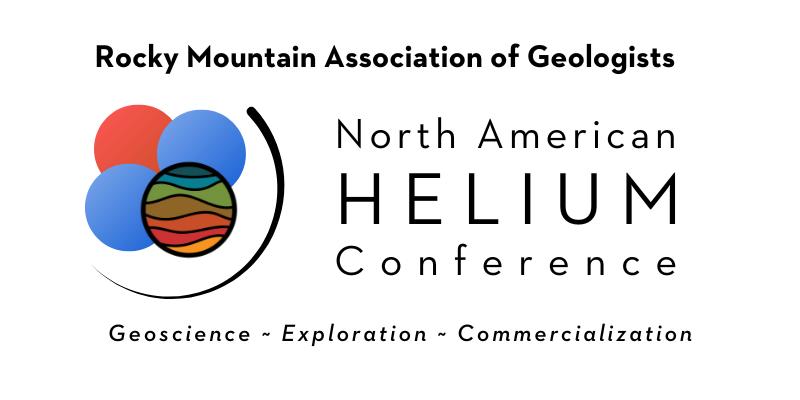













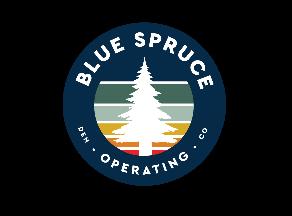


operations of the Association. She also helped RMAG seamlessly transition into pandemic operations to remote and hybrid events in a manner and method that put RMAG ahead of other similar associations in delivering content to members during the lockdown period.
The summer events season of geologic outdoor adventures is so close, but with the highly variable weather of Colorado and the Rockies, we have only one outdoor event during April: the April 21st Niobrara CEMEX quarry tour near Lyons, Colorado. Registration is now open. This quarry tour may be one of
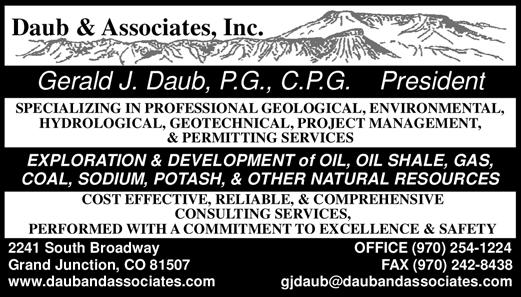
the last because operations at the quarry and the site is undergoing reclamation. It is one of the few locations where you can get up close to most of the stratigraphy of the Niobrara Formation, and when I was there a few years ago, walk on a Codell Sandstone and Fort Hays Limestone dipslope.
We have another of the highly successful RMAG Women’s Coffee on Tuesday April 4th and the monthly lunch on Wednesday April 5th. This month’s lunch is a focus on landslides, a common geologic process, yet one that can pose as a significant hazard to life and property. As always, thank you for your attendance at, support of, and sponsorship of events.
Geopolitically Secure and Reliable Helium Supply: Operator of Canada’s largest helium purification facility with production expected to double in 2023

Low Emissions Sourced Helium: From deep, high-pressure nitrogen fields with significantly lower emissions than hydrocarbon-based sources
Strong Customer Focus: Delivering both gaseous and liquid helium to our customers around the world
Growing Production: Spot loads of gas or liquid helium available for sale beginning in early 2023
Most Active Explorer: Over 45 wells drilled to date, with additional discoveries being advanced toward production
R o c k y M o u n t a i n A s s o c i a t i o n o f G e o l o g i s t s

5 d a y s / 4 n i g h t s o n t h e L o w e r S a n J u a n w i t h F o r t L e w i s o n t h e Wa t e r a n d G e o P r o f G a r y G i a n n i n y Y o u ’ l l e n t e r t h e G l e n C a n y o n N a t i o n a l R e c r e a t i o n a r e a a n d f l o a t t h r o u g h g o o s e n e c k s c a r v e d d e e p i n t o s a n d s t o n e e a r t h , v i s i t d r a m a t i c g e o l o g y a n d a r c h a e o l o g i c a l s i t e s , a n d e n j o y r i g o r o u s h i k i n g o p p o r t u n i t i e s .
F o r d e t a i l e d i n f o r m a t i o n : www.rmag.org

- 9 8 9 8 o r s t a f f @ r m a g . o r g

and in the West Elk Mountains.
Some came to Western for the mountains, or for comparatively affordable tuition, others for the appeal of small class sizes, world-class athletics programs in skiing or track and field. But all who chose Western as their college home found a high-quality geology program with dedicated faculty and like-minded colleagues.
Founded in 1901 as the Colorado State Normal School - a two-year teaching college - Western became a four-year institution in 1923 as Western State College, achieved University status in 2012, and became Western Colorado University in 2019. Nestled in the Gunnison River valley and surrounded by 12,000 -14,000 ft peaks on Colorado’s western slope, Western now counts itself as home to 2900 students.
Geology became a field of study as a minor in 1959, and was first listed as a major in the 1960-61 College Bulletin. The first two students to complete the program, Merrie McCrory and Richard O’Rourke, graduated in 1961. Since that time 730 geology program graduates have followed in their footsteps. One of the first regionally famous geologists, Dave Gaskill, graduated with a science degree before there was even a geology program. Gaskill went on to publish numerous geologic maps in the laccolith cluster northwest of Gunnison,
The first professors to teach geology at Western in the 1950’s were John Sumner and John Welch. Richard Moyle joined in 1960 and was instrumental in establishing the geology major. When he left in 1965, Tom Prather and Bruce Bartleson took the helm, and they guided the program for the next three decades. Tom, Bruce and Fred Menzer oversaw the meteoric growth of the program from 10 majors in 1965 to 173 in 1983, as the price of oil climbed in the 1970’s, from $6/bbl to $34/bbl in 1981, and many program graduates became employed in the petroleum and mining industries.
Allen Stork joined the faculty as the igneous petrologist in 1985 after finishing his Ph.D. on the magmatic evolution of Fiji, just in time to witness the decline of enrollment until the early 1990’s when energy and minerals prices began to once again buoy up student interest in geology. The Prather, Bartleson and Stork era of 1985 – 1996 saw 100 more students graduate from the program. Jobs were tight in those days, especially in the oil patch, and many of these students gravitated toward jobs in mining, hydrogeology and environmental geology, federal and state geological surveys.
Notable alumni include Paul Rady (’78) and Peter Dea (’76) who helped establish the Barrett Resources
» CONTINUED ON PAGE 19
FOR THE PAST SIXTY-TWO YEARS, GEOLOGISTS HAVE FOUND A START AT WESTERN COLORADO UNIVERSITY.
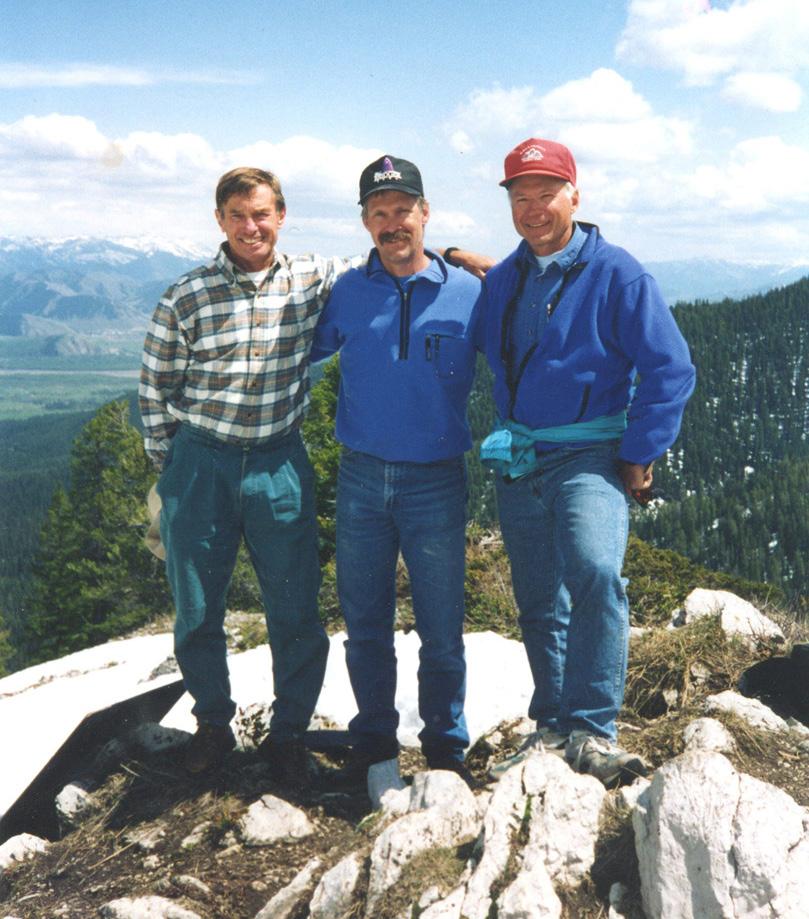
ABOVE: Affectionately known as the “weeny wagons”, Western used these modified station wagons as field vehicles in the 1960’s. Shown in 1968 on Dewey Bridge Road, UT.

LEFT: Students and faculty members at the annual geology program picnic in 1977.

» CONTINUED FROM PAGE 16
Company scholarship in 1997 in honor of Bruce Bartleson and Tom Prather. In 2001 alumnus Paul Rady (’78) donated $1M to establish the Rady Chair in Petroleum Geology, and with this donation, a new emphasis in Petroleum Geology was founded. Jim Coogan joined the team from 2002 to 2014 as the first Rady Chair in Petroleum Geology. In 2005, William “Tex” Alvin Moncrief Jr. followed suit by donating $1M to establish the Moncrief Chair in Petroleum Geology, and a 2007 donation that established the Moncrief Petroleum Geology Endowment for Excellence. Although, Tex Moncrief did not have a direct connection to Western he and his family have had a long-time love for the Gunnison area. His generous philanthropic spirit led him to support several programs at Western, including geology, business and anthropology. Paul Rady in 2014 contributed an additional $1.55M to the Rady Chair endowment. The timing of these two endowments could not have been better. With the new petroleum program, rising oil prices and seemingly limitless job opportunities, enrollment ramped up to peak for the second time in
2015 with 90 majors and an average of 13 graduates per year.
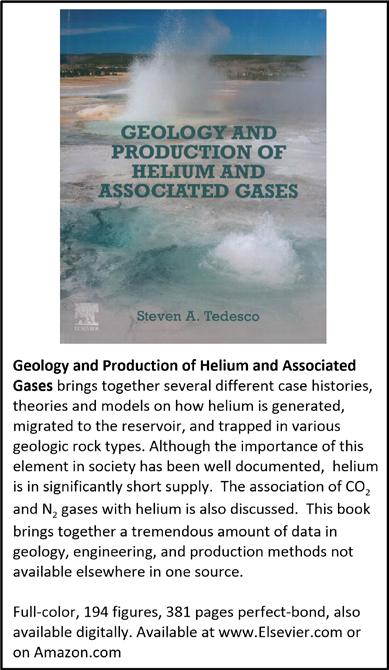
Western is located in a natural laboratory for field geologic studies. From the Precambrian igneous and metamorphic rocks of Black Canyon of the Gunnison River, to Paleozoic and Mesozoic sedimentary rocks deformed by the Laramide orogeny, to Tertiary volcanic rocks and the laccolith cluster, to Quaternary glacial landscapes, almost every geologic environment and level of complexity is represented. The program takes full advantage of this ready access near its campus and includes easy access to additional world class areas of study in the Rio Grande Rift of Colorado and New Mexico, the Colorado Plateau, the Basin and Range province and the Idaho-Wyoming thrust belt. When we talk with alumni, they often fondly recall their time spent in the field at Western – whether it was a local-area lab in a Sed-Strat, Structure, Petrology, or a Geomorphology
» CONTINUED ON PAGE 21
A premier exploration and production company focused on the acquisition, exploration, development, exploitation and trading of conventional and unconventional oil, natural gas, and helium resources on a global perspective
Operating merging unconventional oil and gas play in Texas, and North America, and undertaking world-class helium gas field
Multiple international trade channels in Specialty Gases and LNG
S&P/ASX 300 Index since March, 2019
Headquartered in Houston, TX and having offices in Perth, Australia and Beijing, China
http://www.heliosenergyltd.com/
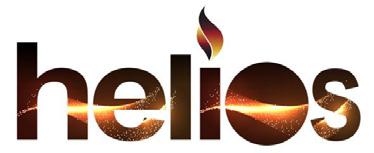
ABOVE: Camp COVID – 2020 Field Camp at Idaho State University’s Lost River Field Station

LEFT: Student Noah Zorsky explains his research poster at Western’s annual Celebration of Scholarship

» CONTINUED FROM PAGE 19
course, the annual spring departmental field trip, or summer Field Camp.
Western’s proud tradition of providing a strong foundation in field geology continues to this day, with a strong emphasis on traditional field skills. Field geology began in the mid-1960’s when Tom Prather led students on field trips, solving field geologic problems on weekends during the semester in the Gunnison area. Geology Field Camp, in its modern form, began in the mid-1970’s, when Bruce Bartleson introduced intensive mapping projects in the Picuris Mountains of northern New Mexico. Western has continued to offer a traditional field camp for the next five decades. Stratigraphy, geologic mapping, and engineering geology field projects now take students to study areas in the Gunnison Valley, eastern Utah, the Idaho-Wyoming thrust belt, the Book Cliffs, and south-central Idaho. Near home, field geology projects include mapping the Elk Range thrust fault between Crested Butte and Aspen, and mapping in intensely folded amphibolite facies Precambrian metamorphic rocks at Beaver Creek. At Needle Creek, along the edge of the San Juan volcanic field and Crookton thrust, students map structurally complex Laramide features intruded by plutons and overlain by pyroclastic rocks. Other projects include the complex interaction of Laramide structures and Quaternary landslides at Hot Springs Reservoir, and Engineering Geology of the Calumet mining area near Salida.
In 2019 the program expanded the field camp to offer a six-week field experience with the addition of a 2-week advanced field geology course, providing students with the opportunity for a more extensive field experience. The advanced field geology course travels to different locations each year, and has been taught at Flaming Gorge in the Uinta Mountains, the

» CONTINUED ON PAGE 23

ABOVE: Student Eva Barry on a field trip in eastern Utah

BELOW: Western students in Dr. Stork’s mineralogy class, 2017

» CONTINUED FROM PAGE 21
eastern Boulder Mountains of south-central Idaho, and along the Absaroka thrust in the Wyoming thrust belt near Kemmerer. Students also now participate in a freshman field trip, and the one credit sophomore-level field trip that Tom Prather and Allen Stork began years ago, is once again offered annually. The spring departmental field trip has a rich history and many (unpublishable) stories. Over the decades, the trip has been run nearly sixty times and has visited nearly every geological highlight from Texas to Hawaii. Recent trips have taken van loads of students to the southern Rio Grande Rift, the Zuni Mountains of New Mexico, Capitol Reef, the Great Basin and Lake Bonneville, the San Rafael Swell, Zion, Capitol Reef, Grand Canyon and Arches National Parks.
When the coronavirus shuttered most field camps in the summer of 2020, like many students nationwide, a group of Western’s graduating seniors were
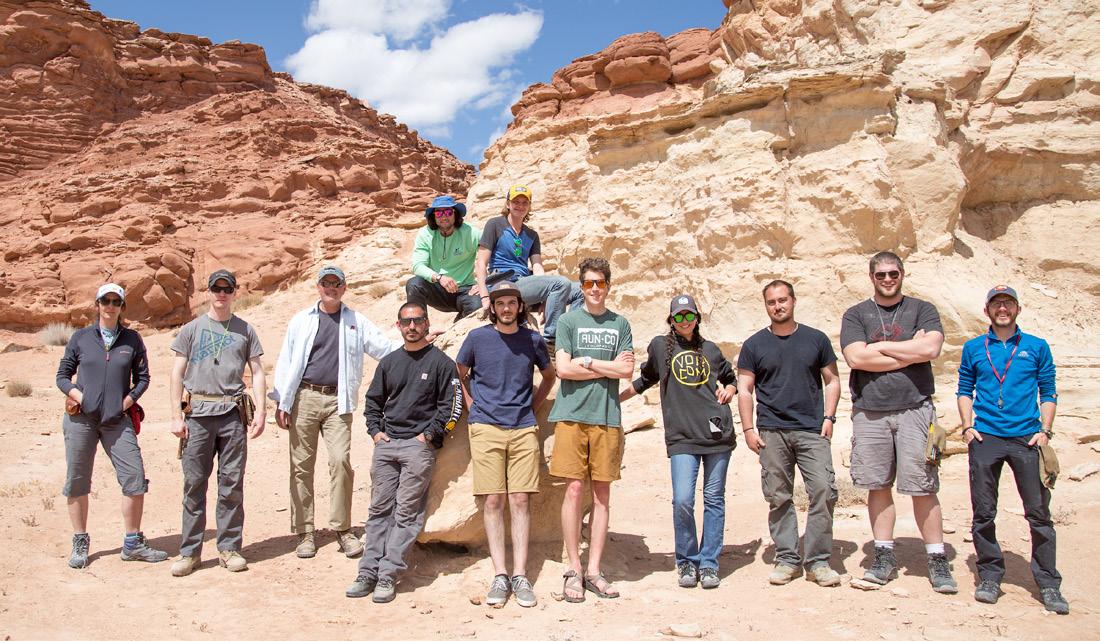
left with few options – in need of Field Camp to graduate, but with only a few Universities nationwide offering it during COVID lockdown. Many universities cancelled their field camps altogether, or rushed to put together an online option. While exploring options for Western students, we discovered that Idaho State University’s Lost River Field Station at MacKay, Idaho was empty, save for one graduate student working in the Lost River Range. Camp COVID was invented. After gaining University approval, an “ok” from Colorado’s Higher Learning Commission, and repeated COVID tests and protocols, Drs. Petrie and Burton and four students travelled to LRFS. They then self-quarantined as a “COVID pod” in the Pioneer and Boulder Mountains. This 21-day intensive field camp included mapping in the upper plate of the Pioneer Mountains Metamorphic Core Complex and was a truly rewarding field experience.
» CONTINUED ON PAGE 24
In 2016, Western geology graduates began receiving the Bachelor of Science degree, replacing the BA degree that had been awarded since 1961. Robert Fillmore joined the faculty after Bruce Bartleson retired in 1996. The faculty were supplemented in 2007 with the addition of geomorphologist/Quaternary geologist Dave Marchetti, structural geologist and Moncrief Chair Elizabeth Petrie (2014), and regional tectonics geologist Rady Chair Brad Burton (2015). Holly Brunkal is a senior lecturer in the program and as an Engineering Geologist adds curricular strength in understanding and documenting natural hazards and the geology that underpins built projects.
Funding from the Bartleson-Prather research scholarship now supports research in all fields of geology and has resulted in projects completed in carbon sequestration, induced earthquakes, beaver dams and pseudo dams in fluvial geomorphology, and vertebrate taphonomy, igneous petrology and geochemistry, among many others. Undergraduate collaborative research is a prominent part of a student’s education, with students participating in fundamental research projects under the mentorship of all faculty members. Research, and travel for presentations at conferences is also supported by Western’s SOURCE fund (Western Fund for Scholarly Opportunities, Undergraduate Research, and Creative Expression) – a student funded initiative. Presentations at local, regional and national conferences result from most of these research projects, and Western’s own Celebration of Scholarship poster and oral presentations.
The petroleum geology program has fully integrated industry-standard software into its project-based courses. These programs are maintained through generous donations from software vendors. Students learn to use Petra, Kingdom Suite, BasinMod, Petrel, AccuMap, LithoTect, and Rose & Associates software in solving geologic problems and evaluating economic opportunities. Geophysics courses use the program’s 24-channel Geode seismograph to collect subsurface data in the Gunnison Valley, including depth to groundwater. During drilling of water wells near Crested Butte and Star Mountain students devised a method using the drill bit as an energy source, to monitor reflections
as a “look-ahead” tool to avoid abandoned underground coal mine workings.
With a complete range of subject matter experts across geologic disciplines, Western continues to emphasize field-based education. Eighty percent of our courses include a field component for data collection or application of skills learned in lecture. In all classes students focus on making observations followed by interpretation, applying the scientific method and communicating results to their peers and the public.
Students attending Western earn geology degrees with emphases in geology, petroleum geology, geoarchaeology, environmental geology or secondary education licensure in Earth-Space science. These emphases provide students with specialist knowledge, while sharing a common core of fundamental geology skills. Petroleum geology faculty are currently working toward delivering new Energy Geoscience course content in the geology of carbon sequestration, geothermal energy and critical minerals. Faculty strive to develop research opportunities supported through external funding and/or research scholarships.
Western geology graduates are well prepared for internships, entry level jobs and graduate school programs. In spite of dropping enrollments, a problem faced by undergraduate geology programs nationwide, our post-graduation placement continues to be over 90%. Most graduates either enter graduate school or go directly to work in a geoscience field. Recent graduates have begun careers in mineral exploration, petroleum exploration and production companies, wellsite geology, environmental geology and geotechnical. Subsurface mapping and computer software skills, and a strong background in fundamental geology make students desirable candidates for graduate schools, and many students continue their studies at Colorado School of Mines and other major universities throughout the country. Our alumni and future alumni are the best representatives of the Western geology program, and are strong supporters of the program through their success and generosity.






Speaker: Stephen Slaughter
Date: April 5, 2023 | 12:00 pm - 1:00 pm
Landslides occur in all 50 states and territories and landslide loss in the US is estimated in the billions of dollars and cause multiple deaths annually. Landslides can happen with no notice and can move over a period of seconds, hours, days, weeks, or longer. They can damage or destroy homes, infrastructure, transportation networks, and utilities. Despite the scientific community’s thorough understanding of landslides processes and the hazards they pose to society, there remain numerous challenges to reducing annual loss and increasing public safety from landslides. These
challenges include identifying who and what is vulnerable to landslides; understating how land use, land management, and development influence risk; and how historical and current policies create inequities and vulnerabilities from landslides. This presentation will discuss those challenges along with other issues landslides pose to governments and homeowners. Significant historic landslides and their societal impacts will also be discussed along with reasons why future homeowners should always consider landslide hazards when choosing to live near or on a slope.
STEPHEN SLAUGHTER has worked in landslide hazards for nearly 20 years, focusing primarily on landslide inventories, susceptibility and hazard analysis, outreach, and emergency response. His current role is the Associate Program Coordinator for Landslide Hazards at the USGS, which helps direct the Landslide Hazards Program. He also coordinates landslide technical response for domestic and international landslide disasters. Prior to the USGS, Stephen’s career varied from consulting forest land managers on harvest-related landslides, working on emergency teams to assess post-wildfire debris flow hazards to downstream communities, consulting emergency managers on significant landslide events, developing and managing a landslide hazards program for the state of Washington, assisting developing countries seeking to improve their existing landslide programs, and producing educational material to help non-scientists understand landslide hazards. Stephen is a recent transplant to Colorado, moving from Washington state where he was raised, attended college (BS in geology at Western WA. Univ. and MS in geology at Central WA. Univ.), is a Licensed Engineering Geologists, and worked his first 15 years as a geologist for the state of Washington at the Dept. of Natural Resources and then the Washington Geologic Survey.



Speaker: Ken Balleweg
Date: May 3, 2023 | 12:00 pm - 1:00 pm
Presenter: Ken Balleweg
The Beulah Marble Quarry, located in the Wet Mountains of southern Colorado in western Pueblo County, was the source for the stunning pink and red banded marble wainscoting prominently displayed throughout the Colorado State Capitol building. The marble, also known as Colorado Rose Onyx and Beulah Red, is hosted by the Mississippian Leadville Limestone at the southernmost occurrence on the Front Range. Rather than being a true marble of metamorphic origin, it consists of elaborately patterned hematitic leisengang-banded limestone formed by a multi-stage paleokarst process. Highest quality marble occurs adjacent to dissolution features localized at the Leadville/Fountain Formation unconformity. Paleocaverns and sinkholes infilled with hematite-rich Fountain and probable Molas
Formation equivalent mudstones, arkosic sandstones, and karst breccias are closely spatially related to the marble deposits. Field relationships indicate that ferric iron was leached out of the infilled paleokarst features into the surrounding limestone in multiple episodes shortly after deposition and before deep burial.
Three quarries were operated from 1894 through 1900 by the Beulah Marble Company with all production going into the Capitol. The marble was hauled 25 miles by wagon to the railhead in Pueblo prior to shipment to Denver for cutting and polishing. The quarries were abandoned at the time of Capitol completion and have been inactive since. The Beulah quarries are the only known deposits of the unique material.
KEN BALLEWEG is a Beulah native and a geologist with over 40 years of exploration and production experience in the western US and Latin America. His positions included Placer Dome’s senior project geologist for the Mulatos gold mine, Senior Project Geologist at the Cortez and Getchell gold mines, Vice President Exploration for Alamos Gold, and Vice President Exploration for Pucara Gold in Peru. His expertise is primarily centered on high sulfidation gold deposits, sediment-hosted gold systems, and paleokarst control on mineral deposits. He has a B.Sc. in Geological Engineering and M.Sc. in Geology from the Colorado School of Mines and is a registered professional geologist with the American Institute of Professional Geologists.




I spent several years living in southern California when I was younger. Earthquakes, wildfires, and mudslides were a common occurrence, and I became really interested in natural disasters and how geology shapes our world. For my 15th birthday I received a book called The Control of Nature by John McPhee. Although not an avid reader at the time, I read it front to back in a day! Another defining moment was later that summer when I accompanied my grandparents to Ischia, a volcanic island in the Bay of Naples, Italy. I begged them to send me on a tour to visit Vesuvius and Pompeii and on a very hot July day I summited Vesuvius. I came back with a bag of rocks that I later identified as pumice.
Skip to 4 years later, as I was floundering in college. Not knowing geology was a major, I stumbled across an earth science course that was TA’d by geology grad students. Everything finally clicked and that was the semester I switched my major to geology!
RMAG’s Diversity and Inclusion Committee is featuring a monthly Member Corner. We hope you’ll enjoy learning about the diverse community of Earth scientists and wide variety of geoscience disciplines that comprise our membership. If you would like to appear in an upcoming column, or if there is someone you would like to nominate, please contact staff@rmag.org
My very first job was working at the Bavarian Red Cross in Munich for a summer to save up for my first year of college. It was an extremely mundane data-entry position in the accounting department. I remember the people fondly, but the job was beyond boring! I did enjoy the beer vending machine in the cafeteria at lunch time.
I started off my career with a major oil company and have “downsized” through the years. After first working primarily as a reservoir quality specialist at BP in Houston, I moved to Denver in 2008 to join the New Ventures Team at Cimarex. This was the beginning of the unconventional revolution. Not only did I change gears from being highly specialized to a generalist, but I moved from working conventional to unconventional rocks. After a few years at Cimarex, I switched to a smaller private-equity-backed company for several years, evaluating deals in North
American basins to prove up and grow. However, my passion for understanding rocks on the microscale never subsided. I saw a need for this type of work in the industry while casually talking to my reservoir-quality contacts. I almost subconsciously started Looking Glass in 2015 when still working for a company, thinking that one day I will have my own business. In 2017 I left my position for family reasons and a few short months later I purchased all the necessary microscope equipment and had my first client. Now, I have come full circle and look at rocks under a microscope, often for reservoir quality purposes. Key learning: keep and nurture your “old” contacts. You never know how and where these contacts will influence and lead you!
I am a sedimentary petrologist and characterize reservoirs on a microscopic scale. Depending on the rock material at hand (whole or rotary sidewall cores, cuttings, or outcrops) I provide qualitative and quantitative data for composition, cements, porosity types, and other important attributes. Petrographic data can ground truth other geologic data and is powerful in understanding your reservoir for the purpose of oil and gas extraction, CCS/CCUS, and helium storage. Every project I work on is different and I really enjoy brainstorming workflows that best suit my client’s objectives, whether it’s data collection for reservoir-quality modeling, integrating rock data with logs, or compositional/modal- trend analysis along a wellbore or on a regional scale. I also manage all aspects of my business such as constructing project proposals, estimates, final presentations or reports, and billing. Thankfully we live in an age where software can help with the non-geoscience aspects of my business. I also feel lucky that I have the most amazing clients and they’ve been exceedingly helpful and patient with me as I learn the ropes of business ownership and management.
I found that being an involved parent and an effective full-time geoscientist is one of the more challenging things as a working professional. After I became a mom, my priorities changed, and I had a hard
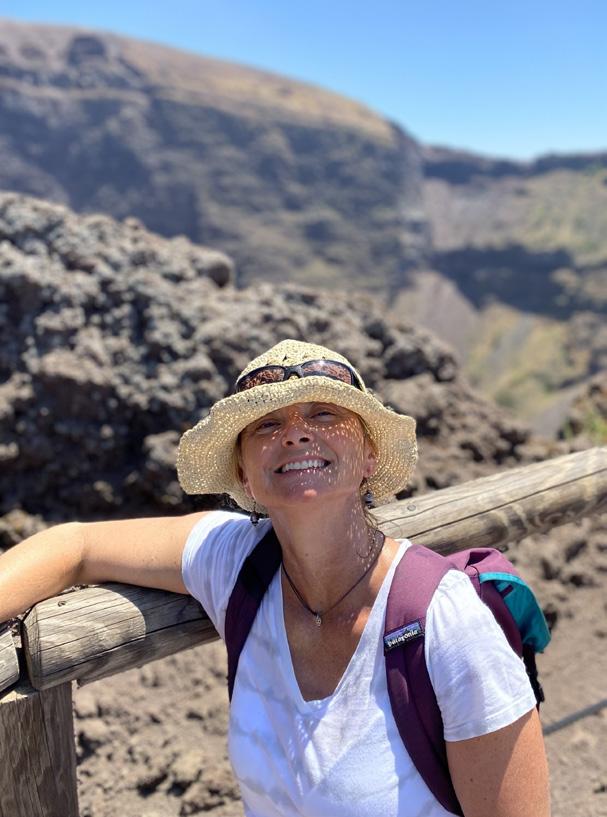
time navigating expectations demanded of me in my job and being there for my kids without completely burning out. This space would have been much easier to navigate if the O&G industry overall had a more contemporary view towards work-life balance and standardized job sharing or part-time opportunities. They exist but they are few and far between; some companies have great policies for working parents, but they are the exception and not the norm. I love working in the geosciences and would never have not wanted to work! I’ve now found the happy medium by founding Looking Glass, Ltd, where I get to work on fun projects mostly on my own schedule.
1) Be flexible as far as opportunities go. Things will never turn out the way you expect. 2) Stick to your core values. Never change those values for a company or a job. 3) Always demand clear expectations for your position.
» CONTINUED FROM PAGE 31
WHAT GEOLOGIC TIME PERIOD WOULD YOU TRAVEL TO IF YOU WERE GIVEN A TIME MACHINE?
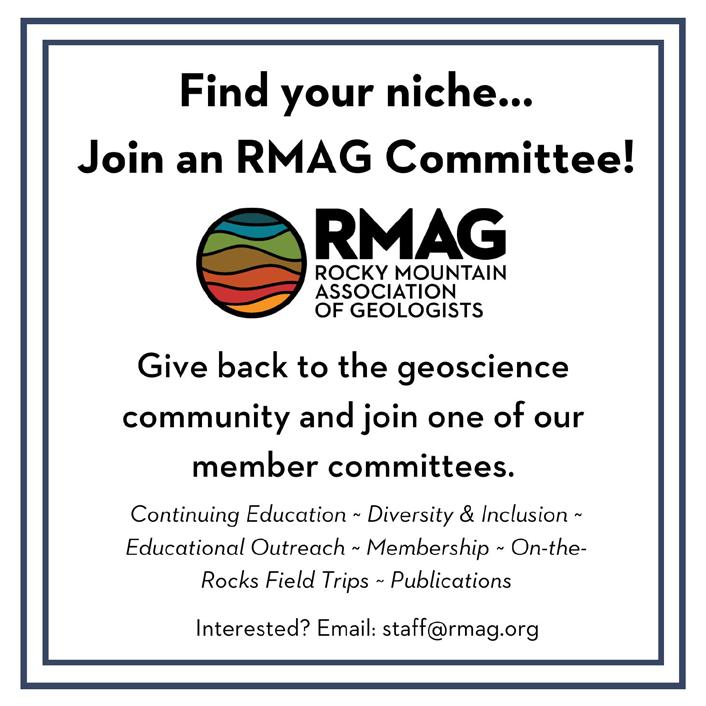

The Cambrian Explosion.
IF YOU COULD LEARN ANYTHING, WHAT WOULD IT BE?
Two: read Egyptian hieroglyphics and learn to fly an airplane.
IF YOU WOULD VISIT ANYWHERE IN THE WORLD THAT YOU’VE NEVER BEEN, WHERE WOULD YOU GO?
I have a long bucket list, but at the top are Petra in Jordan, the pyramids of Giza, and Valley of the Kings on the Nile. I think all that can be done in one trip.
WHAT WAS THE LAST BOOK YOU READ?
Demon Copperhead by Barbara Kingsolver.
WHAT IS YOUR SECRET TALENT NO ONE KNOWS ABOUT?
I swim like a fish. My family worries I will grow gills and fins one day!
WHAT DO YOU LIKE BEING COMPLIMENTED ON?
The lack of any accent. Most people who first meet me have no clue that English is not my first language. Every now and then I say something quirky though.
WHAT DO YOU LIKE DOING WHEN YOU ARE NOT WORKING?
Enjoy being outside doing pretty much anything and everything with friends and family. In the winter I alpine ski, cross-country ski, and ski bike. In the summer you can find me on my mountain bike or on the trails on foot with Archie, my dog, or paddle boarding or swimming in a local watering hole. I enjoy gardening when I’m at home.
APRIL 4, 2023
DWLS Workshop.
“Core to Log and Log to Core: The Evolution of Tying Two Dimensions Together.”
RMAG Women’s Group Coffee.
DERL- 730 17th Street, B-1. 10 AM-11 AM.
DPC.
Speaker Series: Geothermal.
APRIL 5, 2023
RMAG Luncheon.
Speaker: Stephen Slaughter. “ Landslides and the Hazards Posed to Society by a Common Geologic Process.” Online or In-person at Maggiano’s, Denver. 12:00 PM-1:00 PM.
APRIL 14, 2023
COGA.
“Water Fluency: Experience Leads to Innovation in the Rocky Mountain West.” 9:00 AM- 8:00 PM.
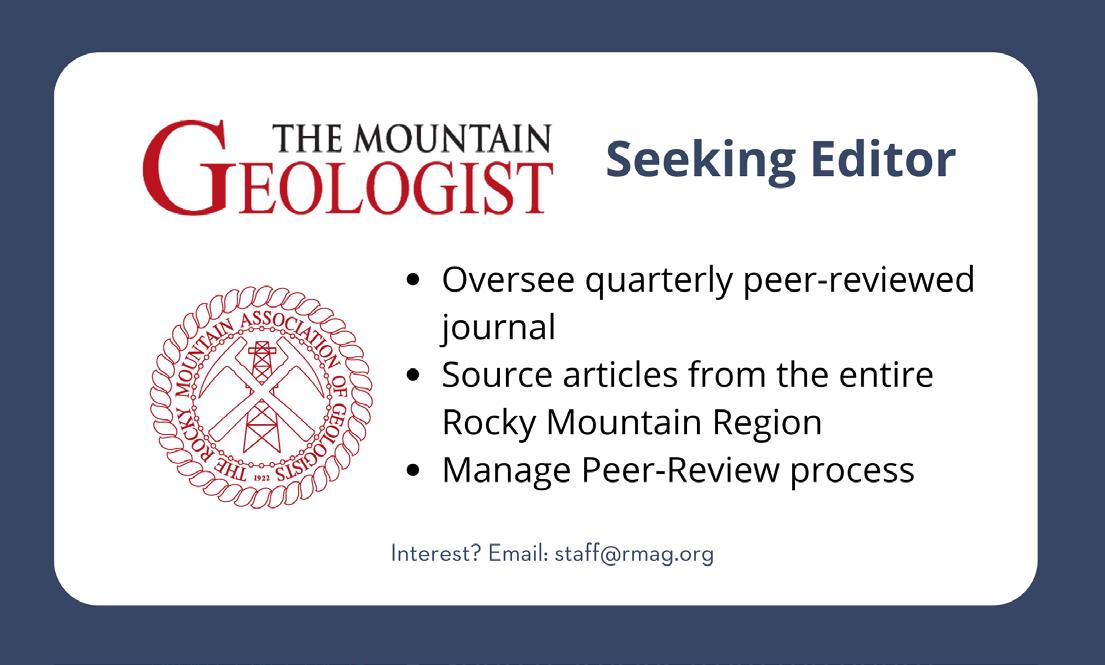
APRIL 18, 2023
DWLS Luncheon.
Speaker: Robert Lieber. “Rock Type Recognition Using Deterministic Methodologies for the Codell Sandstone of the DJ Basin.”
APRIL 25, 2023
WOGA Technical Lunch.
Speaker: Andrew Parker.
“Energy and the Environment: Why Oil and Gas Professionals Should Embrace the Climate Conversation
and Take Back the Narrative.”
Email at info@wogacolorado. org.
RMS-SEPM Luncheon
Lecture.
11:30 AM-1:30 PM. Rock Bottom Brewing.
APRIL 27, 2023
DPC Lunch and Learn.
11:30 AM- 1:00 PM at DERL, 730 17th St. Suite B-1, Denver. Contact: Kim Foster (Kim@ denverpetroleumclub.com).
Douglas Alexander lives in Red Lodge, Montana.
Megan Brown is an Assistant Professor at Northern Illinois University and lives in Sycamore, Illinois.
Alex Caruana lives in Denver, Colorado.
Eric Cummins is VP of Exploration and Production at Four Corners Helium and lives in Midland, Texas.
Stephen Harpham is President at Orogeny Resources LLC and lives in Littleton, Colorado.
Rebecca Harrington is a Geology Manager at BKV Corporation and lives in Denver, Colorado.
Matt Hess works Carbon America and lives in Denver, Colorado.
Wolfgang Honefenger is a Sr Sales Associate at GeoComputing Group and lives in Aurora, Colorado.
Ryan Keeling is a Geologist at Carbon America and lives in Broomfield, Colorado.
Leo Kerrigan is a President/CEO at Kerrigan & Associates, Inc. and lives in Nashville, Tennessee.
Edwin Lindgren is retired and lives in Overland Park, Kansas.
Jean-Sebastien Marcil
is a Geoscience Project Manager at Utica Resources and lives in Levis, Quebec.
Truitt Matthews is Vice President of Exploration at Highland (Texas) Energy Company and lives in Dallas, Texas.
Jonathan McKenna is a Geological Engineer at Microseismic, Inc. and lives in Golden, Colorado.
William Rolph lives in Houston, Texas.
Bethany Rysak is a Geologist at Ovintiv and lives in Denver, Colorado.
Kelsey Zabrusky is a Geologist at DOI, OS, AVSO, DME and lives in Denver, Colorado.

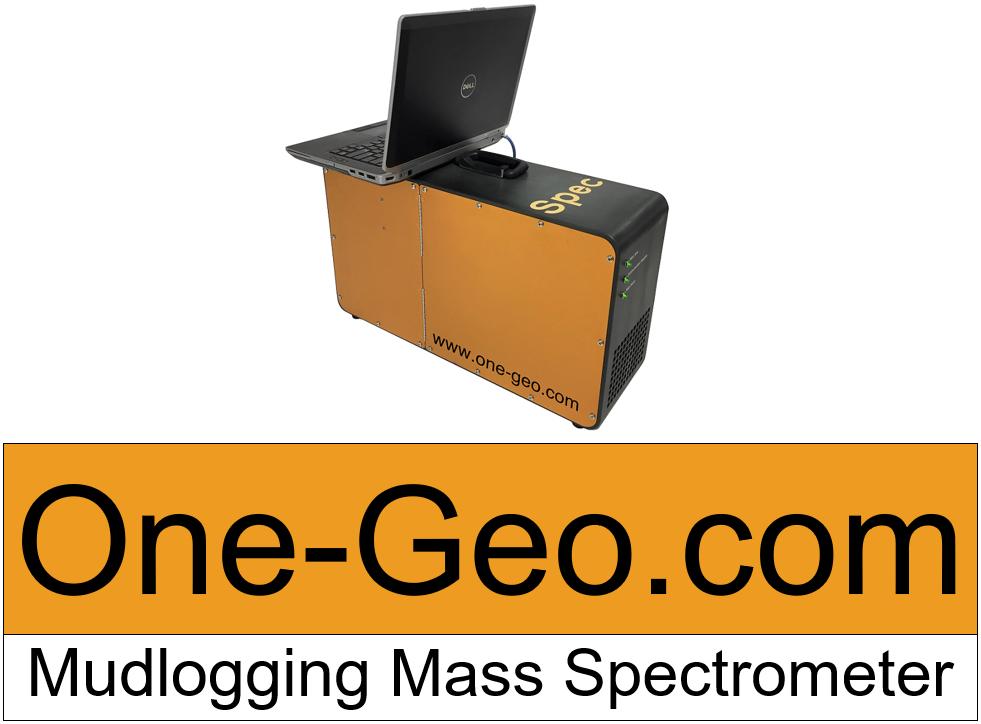
RMAG’s Educational Outreach committee wants to create a collection of Colorado rocks that can be paired with the Colorado geological map. The committee will use these rocks as an educational tool to teach elementary, middle, and high school students about the geology of Colorado, geological processes, and Colorado mineral resources.

While you are on your summer vacations to the many wonderful areas in Colorado, please consider picking up rocks for our collection. We ask you note where you collected the rocks and the formation name. ROCKD is a great app that uses your location and geological maps to “map” the formation under your feet. Keep in mind to collect rocks where it is allowed.
Some examples of rocks from formations that we would love in our collection:
• Maroon
• Leadville
• Chinle
• Green River
• Navajo/Nugget
• Entrada
• Lodore
• Dakota
• Sawatch
• Igneous and Metamorphic rocks
• Wasatch
• Volcanics (San Juan – Flat Tops)
When your rocks are ready, contact us at edoutreach@rmag.org
Thank you!




